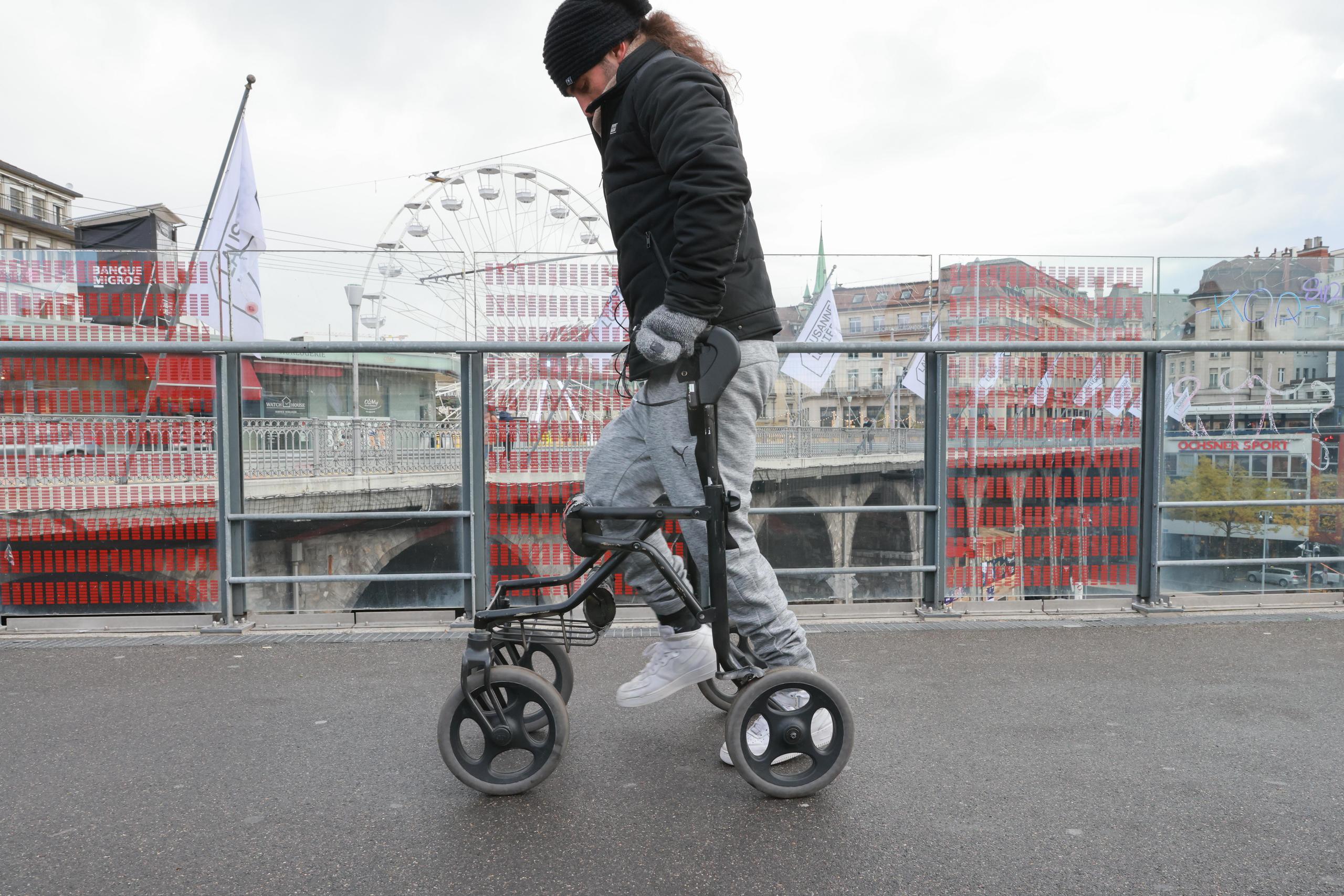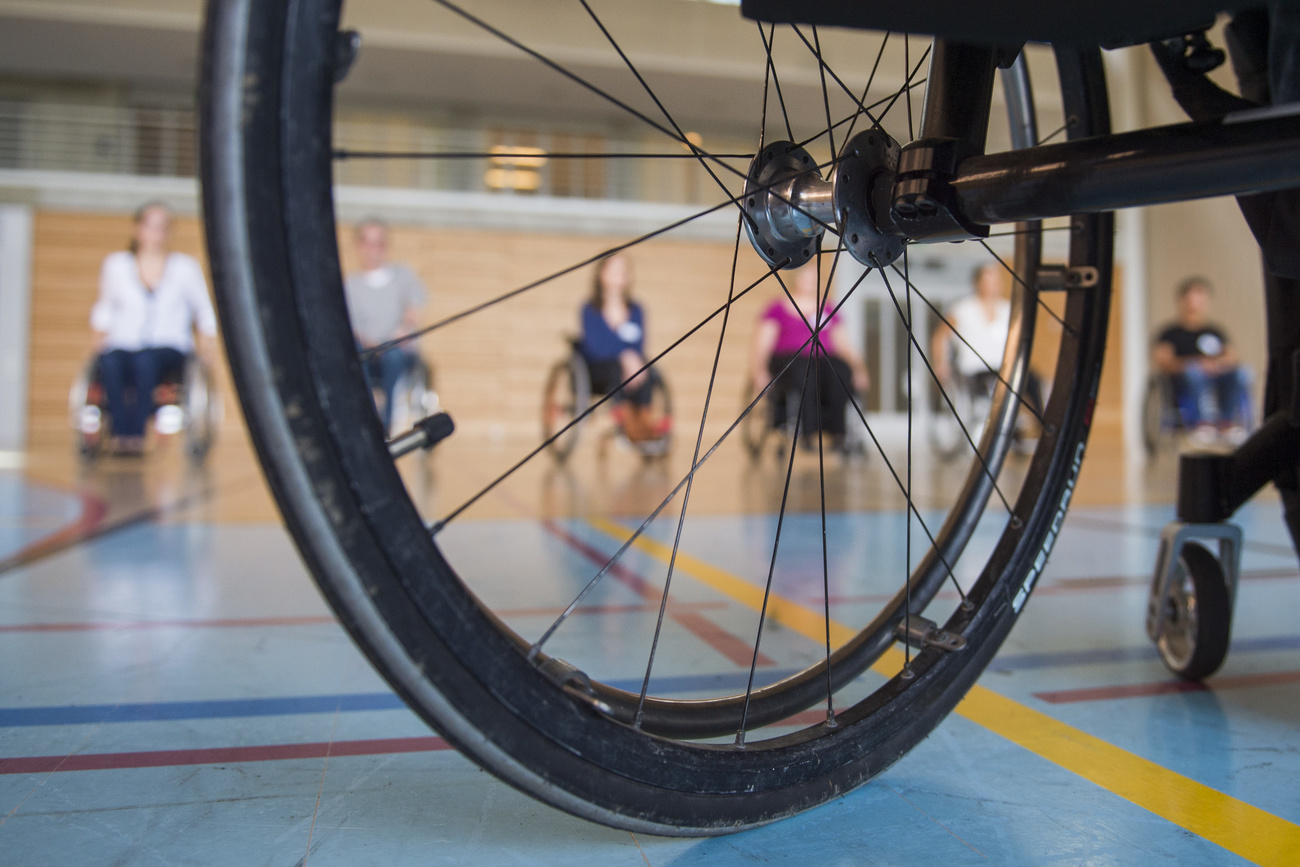
Nerve-stimulation device helps paralysed patients walk, cycle and swim

Three patients whose lower bodies were left completely paralysed after spinal cord injuries were able to walk, cycle and swim using a nerve-stimulation device controlled by a touchscreen tablet, a Swiss-led team of researchers has reported.
The patients’ injuries to a region called the thoracic spine – below the neck and above the lowest part of the back – were sustained one to nine years before receiving the treatment. They were able to take their first steps within an hour of neurosurgeons implanting prototypes of a nerve-stimulation device remotely controlled by artificial-intelligence software.
Over the next six months the patients regained the ability to engage in more advanced activities – walking, cycling and swimming in community settings outside the clinic – by controlling the nerve-stimulation devices themselves using a touchscreen tablet, the researchers said.
All three patients – men aged 29, 32 and 41 – were injured in motorcycle accidents.
Grégoire Courtine and Jocelyne Bloch of the Swiss Federal Institute of Technology Lausanne (EPFL) led the study published in the journal Nature MedicineExternal link. They helped establish a Netherlands-based technology company called Onward Medical that is working to commercialise the system.
The company expects to launch a trial in about a year involving 70 to 100 patients, primarily in the United States, Courtine said.
‘It comes automatically’
There is no existing treatment to enable the spinal cord to heal itself, but researchers have pursued ways to help paralysed people regain mobility through technology.
If this study’s early results are confirmed in larger studies, people immobilised by spinal cord injuries may someday be able to open a smartphone or talk to a smartwatch, select an activity such as “walk” or “sit”, then send a message to an implanted device that will stimulate their nerves and muscles to make the appropriate movements happen, the researchers said.
Normally to initiate movement the brain sends a message to the spinal cord, telling it to stimulate a pool of nerve cells that in turn activate the necessary muscles, Bloch said.
“It’s something we don’t even think about,” she said. “It comes automatically.”

More
Electro-stimulation treatment helps patients with spinal-cord injuries
After complete spinal cord injury, messages from the brain cannot reach the nerves. Other researchers have tried to help paralysed patients walk by stimulating nerves through the back of the spine, using broad electrical fields emitted by implanted devices originally designed to control chronic pain, Courtine said.
AI algorithms
Courtine and Bloch and their team redesigned the devices so that electrical signals would enter the spine from the sides instead of from the back. This approach allows very specific targeting and activation of spinal cord regions, Courtine said.
They then devised artificial intelligence algorithms that instruct electrodes on the device to emit signals to stimulate, in the proper sequence, the individual nerves that control the trunk and leg muscles needed for various activities such as getting up from a chair, sitting down and walking.
The software is tailored to each patient’s anatomy, Courtine said.
When the device was implanted, patients could “immediately activate their legs and step”, Bloch said.
But because their muscles were weak from disuse, they needed help with weight-bearing and they needed to learn how to work with the technology, the researchers said.
They also noted that while the patients regained the ability to perform various activities, including controlling their trunk muscles, for “extensive periods”, they did not regain natural movements.
Still, Bloch said, “the more they train, the more they start lifting their muscles, the more fluid it becomes”.

In compliance with the JTI standards
More: SWI swissinfo.ch certified by the Journalism Trust Initiative















![The four-metre-long painting "Sonntag der Bergbauern" [Sunday of the Mountain Farmers, 1923-24/26] had to be removed by a crane from the German Chancellery in Berlin for the exhibition in Bern.](https://www.swissinfo.ch/content/wp-content/uploads/sites/13/2025/12/01_Pressebild_KirchnerxKirchner.jpg?ver=a45b19f3)













You can find an overview of ongoing debates with our journalists here . Please join us!
If you want to start a conversation about a topic raised in this article or want to report factual errors, email us at english@swissinfo.ch.